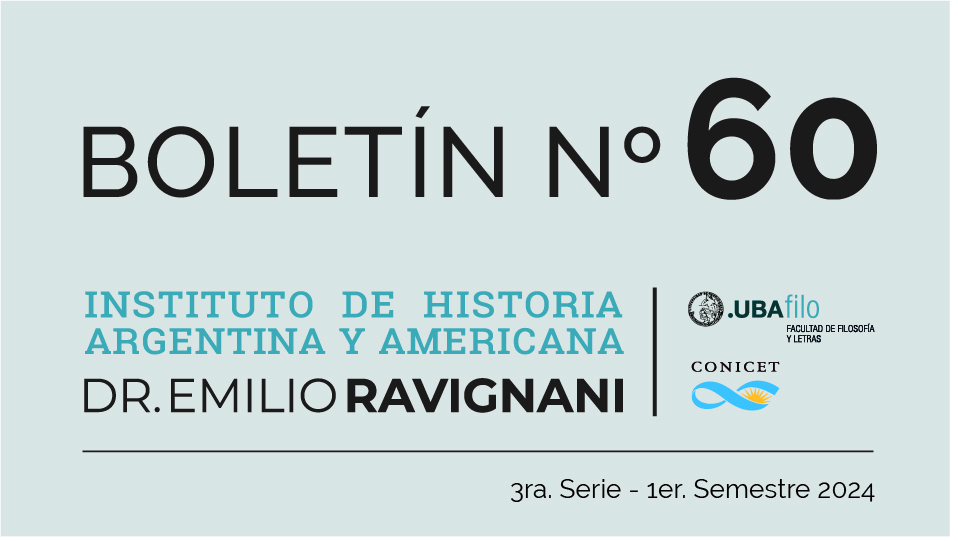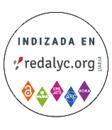The Hitler youth in Argentina through the magazine Junges Volk. Between German, National Socialist and Argentine identities
Abstract
From the 1930s National Socialists in Argentina designed a series of mechanisms to instill the feeling of a renewed and harmonic community comprising most of the very diverse German speaking population in the country. These initiatives were spearheaded by a group of institutions related to the party, which attempted to penetrate the daily life of thousands of people to constitute spaces of sociability which in turn would create a German, National Socialist “us”. With this aim the Deutsch-Argentinisches Pfadfinderkorps (German Argentine Explorer Corps) was established, incorporating boys and youths from the age of 8 to 18. This article examines the pages of its official publication, Junges Volk, focusing on the devices which helped their readers build a German, National Socialist and Argentine identity, in a local political landscape marked by denunciations of a potential “Nazi infiltration” of the country, and by growing concerns about the loyalty of the children of immigrant parents.Downloads
References
Benz, W. y Pehle, W. H. (1997). Encyclopedia of German Resistance to the Nazi Movement. Nueva York: Continuum.
Bisso, A. (2021). Historia de la Asociación Boy Scouts Argentinos (1912-1945). El sendero cronológico. La Plata: Teseo, p. 504.
Bisso, A. (2007) El antifascismo argentino. Selección documental y estudio preliminar. Buenos Aires: Buenos libros.
De Luca, A. M. (2009). San Martín en la historiografía alemana de los siglos XIX y XX. Ponencia presentada en las XII Jornadas Interescuelas/Departamentos de Historia, 28-31 de octubre, Departamento de Historia, Facultad de Humanidades y Centro Regional Universitario Bariloche, Universidad Nacional del Comahue, San Carlos de Bariloche.
De Privitellio, L. (2012). La vida política. En J. Gelman (Dir.) y A. Cattaruzza (Coord.), Argentina. Mirando hacia dentro. Tomo 4 (1930-1960) de Argentina en la Colección América Latina en la Historia Contemporánea (pp. 39-90). Madrid: Mapfre.
Friedmann, G. (2023). The German Speakers of Argentina in the 1930s and 1940s. En M. I. Tato (Ed.), Transatlantic Battles. European Immigrant Communities in South America and the World Wars (pp. 144-163). Leiden-Boston: Brill.
Friedmann, G. (2022). La construcción de la “comunidad del pueblo” nacionalsocialista en la Argentina. Iberoamericana. América Latina-España-Portugal, 81, pp. 145-166.
Friedmann, G. (2019). El discurso nacionalsocialista frente a la ‘infiltración nazi’ en la Argentina. Prohistoria. Historia-Políticas de la Historia, 32, pp. 127-154.
Friedmann, G. (2018). El impacto del nacionalsocialismo en el semanario Der Russlanddeutsche, 1933-1939. Boletín del Instituto de Historia Argentina y Americana “Dr. Emilio Ravignani”, (49), pp. 117-144.
Friedmann, G. (2009). La política guerrera. La investigación de las Actividades Antiargentinas. En L. A. Bertoni y L. De Privitellio (Comps.), Conflictos en democracia. La política en la Argentina, 1852-1943 (pp. 191-212). Buenos Aires: Siglo XXI.
Furtado Kestler, I. M. (2003). Exílio e literatura: escritores de fala alemã durante a época do nazismo. San Pablo: Edusp, pp. 89-90.
Garnica de Bertona, C. (2017). La imagen del Chaco en los viajeros alemanes a la Argentina (1870-1970). Cuadernos del Archivo. Londres-Potsdam: Inolas, pp. 75-84.
Haible, B. (1998). Indianer im Dienste der NS-Ideologie. Untersuchungen zur Funktion von Jugendbüchern über nordamerikanische Indianer im Nationalsozialismus. Hamburgo: Kovač.
Korek, P. (1990). Zum Problem der Rassenideologie in den Jugendbüchern von Erhard Wittek und Fritz Steuben. Zeitschrift für Germanistik, 11, pp. 402-407.
Kornberger, R. (2014). Otto Czierski - Wege und Irrwege eines auslandsdeutschen Schriftstellers. En Frederick A. Lubich (ed.), Transatlantische Auswanderergeschichten: Reflexionen und Reminiszenzen aus drei Generationen: Festschrift zu Ehren von Robert Schopflocher. Wurzburgo: Königshausen & Neumann, pp. 123-134.
Lütge, W., Hoffmann, W., Karl Werner Körner K. W. y Klingenfuss, K. (2017). Los alemanes en la Argentina. 500 años de historia (traducción y edición de Regula Rohland de Langbehn). Buenos Aires: Biblos.
Mintzker, Y. (2017). The Many Deaths of Jew Süss: The Notorious Trial and Execution of an Eighteenth-Century Court Jew. Princeton: Princeton University Press.
Müller, J. (1997). Nationalsozialismus in Lateinamerika. Die Auslandsorganisation der NSDAP in Argentinien, Brasilien, Chile und Mexiko, 1931-1945. Stuttgart: Hans-Dieter Heinz, p. 188.
Newton, R. C. (1992). The “Nazi Menace” in Argentina, 1931-1947. Stanford: Stanford University Press.
Penny, G. (2013). Kindred by Choice: Germans and American Indians since 1800. Chapel Hill: University of North Carolina Press.
Safranski, R. (2012). Romanticismo. Una odisea del espíritu alemán. Barcelona: Tusquets.
Steinbach P. y Tuchel, J. (Eds.) (1998). Lexicon des Widerstandes 1933-1945. Múnich: C.H. Verlag.
Valko, J. (2011). La negociación de una identidad germano-argentina en Der Medizinmann am Lanin, de Bertha Koessler-Ilg. Revista Iberoamericana, Jul-Dic, pp. 1001-1018.
Volberg, H. (1981). Auslandsdeutschtum und Drittes Reich: Der Fall Argentinien. Colonia: Böhlau Verlag, p. 198.
Zwicker, S. (2006). “Nationale Märtyrer”: Albert Leo Schlageter und Julius Fucik. Heldenkult, Propaganda und Erinnerungskultur. Paderborn: Schöningh.
Copyright (c) 2024 Boletín del Instituto de Historia Argentina y Americana Dr. Emilio Ravignani

This work is licensed under a Creative Commons Attribution-NonCommercial 4.0 International License.
The copyright is transferred to the Boletín, but the authors may retrieve them and reproduce their work in other media or formats by means of a written request to the Editorial Committee. In such cases, the Boletín will be cited as the first publication of the work.
The works are licensed under a Creative Commons Attribution-NonCommercial 4.0 International License, which allows others to share the work with an acknowledgment of their authorship and initial publication in this journal.
Also, by written request to the Editorial Committee of the Boletín, the authors may separately establish additional agreements for the non-exclusive distribution of the version of the work published in this journal (for example, placing it in an institutional repository or publishing it in a book), with an acknowledgement of its initial publication here. No commercial uses are allowed.



















